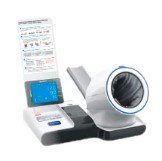Advancements in Machine Learning Technology Transforming Phlebotomy in the United States
Summary
- Machine learning technology is revolutionizing the field of phlebotomy in the United States.
- Advancements in machine learning have improved efficiency, accuracy, and patient care in medical laboratories.
- From vein detection to predictive analytics, machine learning is shaping the future of phlebotomy in the U.S.
Introduction
Phlebotomy is the practice of drawing blood from patients for medical testing, research, or donation. In the United States, phlebotomists play a crucial role in the healthcare system by collecting blood samples and ensuring accurate diagnostics. With the advancement of machine learning technology, the field of phlebotomy has seen significant improvements in efficiency, accuracy, and patient care. In this article, we will explore the advancements in machine learning technology that have been made in the field of phlebotomy in the United States.
Vein Detection
One of the most significant advancements in machine learning technology in phlebotomy is vein detection. Vein detection devices that use machine learning algorithms can accurately locate veins in patients, making the process of blood collection much easier and less painful. These devices work by analyzing the pattern of blood vessels under the skin and highlighting the best vein for blood draw. By eliminating the need for multiple needle sticks, vein detection technology improves patient comfort and reduces the risk of complications.
Benefits of Vein Detection Technology
- Reduces patient discomfort and anxiety during blood collection.
- Increases the success rate of blood draws, especially in patients with Difficult Veins.
- Minimizes the risk of complications such as hematomas and nerve injury.
Predictive Analytics
Another area where machine learning technology is making a significant impact in phlebotomy is predictive analytics. By analyzing data from past blood tests, machine learning algorithms can predict a patient's likelihood of developing certain medical conditions or diseases. This information can help Healthcare Providers make informed decisions about treatment plans and preventive measures. Predictive analytics in phlebotomy not only improves patient outcomes but also reduces Healthcare Costs by identifying high-risk patients early on.
Applications of Predictive Analytics in Phlebotomy
- Identifying patients at risk for heart disease, diabetes, or cancer.
- Personalizing treatment plans based on individual risk factors.
- Improving patient adherence to preventive screenings and lifestyle modifications.
Automation and Robotics
Advancements in machine learning technology have also led to the automation of many aspects of phlebotomy. Robotic phlebotomy systems equipped with machine learning algorithms can perform blood draws with precision and efficiency. These systems are programmed to select the best vein for blood collection, insert the needle accurately, and collect the necessary amount of blood. Automation and robotics in phlebotomy not only improve the quality of blood samples but also free up healthcare professionals to focus on patient care.
Advantages of Automation in Phlebotomy
- Consistent and reliable blood sample collection across different healthcare settings.
- Reduces human error and the risk of contamination during blood draws.
- Increases efficiency and productivity in medical laboratories.
Enhanced Data Analysis
Machine learning technology has revolutionized data analysis in medical laboratories. By processing vast amounts of data from blood tests, machine learning algorithms can identify patterns, trends, and anomalies that may not be apparent to human analysts. This enhances the accuracy of diagnostic results and allows Healthcare Providers to make more informed decisions about patient care. Machine learning in data analysis also enables medical laboratories to streamline workflows, prioritize urgent cases, and optimize resource allocation.
Implications of Enhanced Data Analysis in Phlebotomy
- Improves the accuracy and reliability of Diagnostic Tests.
- Facilitates early detection and intervention for medical conditions.
- Enhances collaboration between Healthcare Providers and medical laboratories.
Conclusion
Machine learning technology has brought about significant advancements in the field of phlebotomy in the United States. From vein detection to predictive analytics, automation, and enhanced data analysis, machine learning is shaping the future of phlebotomy by improving efficiency, accuracy, and patient care. As technology continues to evolve, we can expect further innovations that will revolutionize the way blood samples are collected, analyzed, and used in healthcare settings.

Disclaimer: The content provided on this blog is for informational purposes only, reflecting the personal opinions and insights of the author(s) on the topics. The information provided should not be used for diagnosing or treating a health problem or disease, and those seeking personal medical advice should consult with a licensed physician. Always seek the advice of your doctor or other qualified health provider regarding a medical condition. Never disregard professional medical advice or delay in seeking it because of something you have read on this website. If you think you may have a medical emergency, call 911 or go to the nearest emergency room immediately. No physician-patient relationship is created by this web site or its use. No contributors to this web site make any representations, express or implied, with respect to the information provided herein or to its use. While we strive to share accurate and up-to-date information, we cannot guarantee the completeness, reliability, or accuracy of the content. The blog may also include links to external websites and resources for the convenience of our readers. Please note that linking to other sites does not imply endorsement of their content, practices, or services by us. Readers should use their discretion and judgment while exploring any external links and resources mentioned on this blog.
